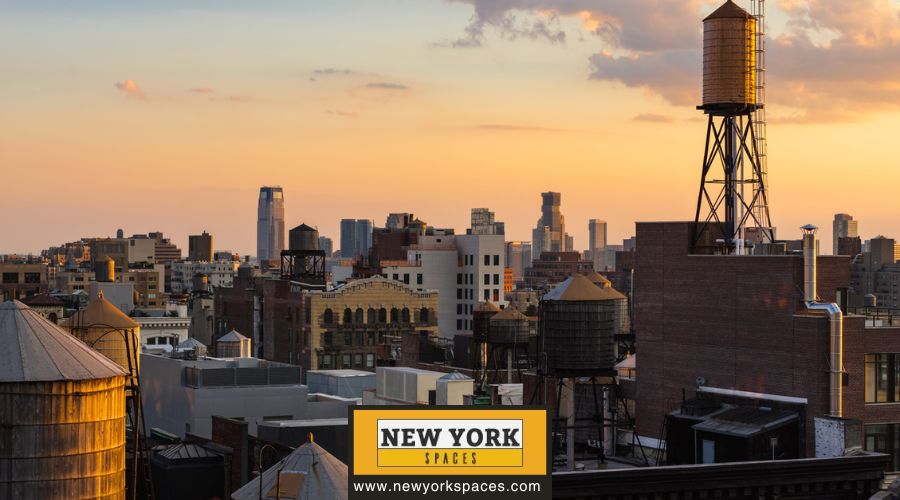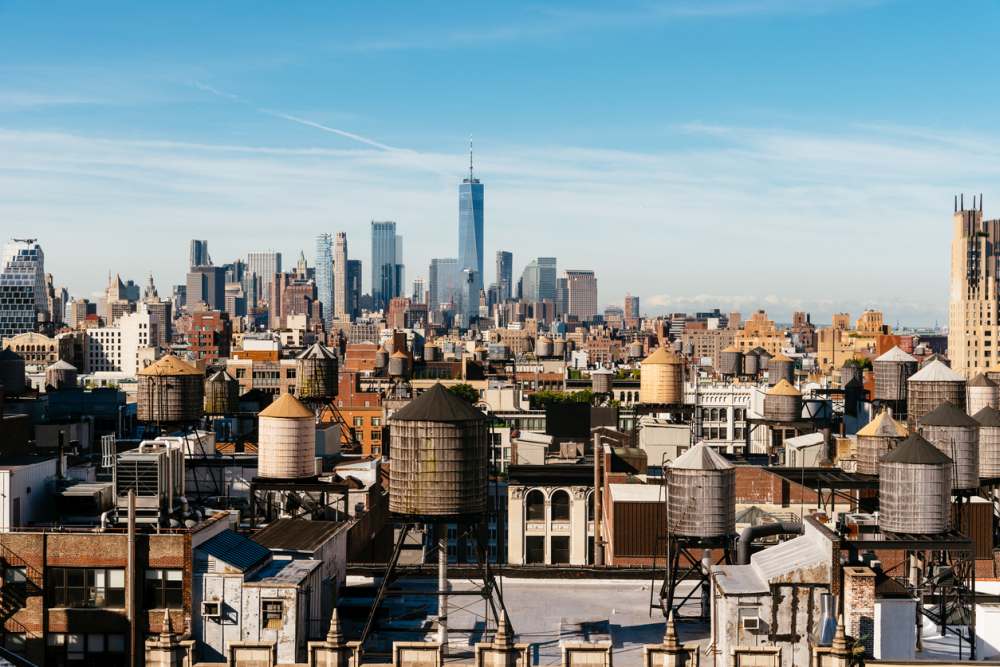When one pictures the New York City skyline, it’s the towering skyscrapers, the gleaming lights, and the architectural marvels that usually steal the spotlight. Yet, perched atop the city’s rooftops, there lies a less celebrated but equally integral component of its urban landscape—the humble water tower.
Often, barrel-shaped wooden structures might seem like quaint relics of a bygone era at first glance. However, they play a crucial role in the daily lives of millions, serving as indispensable nodes in the city’s vast infrastructure network. This section unveils the hidden world of New York’s rooftop water towers, shedding light on their significance beyond their understated presence.
History and Purpose
A symbol of resilience and innovation, these structures have played a pivotal role in shaping the city’s development, ensuring that the lifeblood of the metropolis—water—reaches every resident with reliability and efficiency.
Origins and Evolution
The story of New York’s water towers begins in the late 19th century, a time of rapid urbanization and technological advancement. As buildings stretched ever higher toward the sky, the need for a reliable water delivery system became paramount.
The water tower was born out of necessity and designed to solve the problem of distributing water to the upper floors of the burgeoning skyscrapers. Constructed primarily from wood for its durability and insulating properties, these towers became a common sight on New York rooftops, a testament to the city’s ingenuity and ambition.
Addressing Water Pressure Challenges
The primary function of these water towers is to ensure a consistent water supply at a sufficient pressure. Without modern pumping technology, the early skyscrapers relied on gravity to feed water from the towers down through the building’s plumbing.
This ingenious solution ensured that residents and businesses on higher floors received water with adequate pressure, a challenge that continues to be addressed by these towers in contemporary New York.
Contemporary Relevance
Despite the leaps in technology and infrastructure development, water towers have yet to be relegated to the status of architectural fossils. Instead, they remain vital to New York’s water distribution system. Modern water pumps can push water to higher elevations.
Still, the towers provide a buffer, storing water and maintaining pressure to ensure the supply remains steady during peak usage or power outages. Their continued presence atop buildings, from historic landmarks to sleek new developments, speaks to their enduring utility in the city’s complex urban ecosystem.
Design and Construction
New York’s rooftop water towers are functional infrastructures, urban design, and engineering masterpieces. Crafted to blend reliability with efficiency, these towers are a testament to the city’s innovative spirit.
Architectural Marvels in Wood and Steel
The construction of a water tower begins with the choice of materials, primarily wood, celebrated for its robustness and natural insulating properties. Cedar is often preferred for its resistance to rot and decay, ensuring longevity.
The towers are typically fashioned into a barrel-like shape, optimizing their capacity and structural integrity. This design, reminiscent of ancient cooperage art, demonstrates a seamless fusion of traditional craftsmanship with the demands of modern urban infrastructure.
Components of a Water Tower
- The Tank: At the heart of every rooftop water tower is the tank, a cylindrical structure resembling a giant wooden barrel. This is where the water is stored and distributed throughout the building.
- The Frame: Supporting the weight of thousands of gallons of water is no small feat. A robust steel frame encases the wooden tank, ensuring stability and security against the elements and the test of time.
- The Plumbing: A network of pipes runs from the tank down through the building. These are the arteries of the water tower system, delivering water from the rooftop reservoir to faucets, toilets, and fire sprinkler systems throughout the building.
Engineering Elegance and Maintenance
Beyond their rustic appearance, water towers are feats of engineering designed to operate seamlessly within the city’s complex water distribution system. The construction process involves precise craftsmanship, ensuring that each stave fits perfectly to prevent leaks and maintain water purity.
Regular maintenance is crucial for their upkeep, involving inspections, cleaning, and repairs to wood and structural supports. A well-maintained water tower can serve for decades, with some lasting over 50 years, underlining the durability of these structures amidst the harsh urban environment.
The Unseen Ecosystem
Rooftop water towers are not merely storage vessels; they are vibrant ecosystems contributing to the city’s biodiversity and environmental health.
Habitats in the Sky
Water towers’ secluded and elevated environment creates unique habitats for various species. Birds find sanctuary in the structures, nesting in the crevices and platforms. Microorganisms, too, thrive in these contained ecosystems, playing essential roles in the ecological balance. These mini-ecosystems underscore the towers’ contribution to urban biodiversity, offering a glimpse into the symbiotic relationship between the city and nature.
Sustainability and Water Quality
The environmental impact of water towers extends beyond providing habitats. They represent a sustainable approach to water distribution, minimizing energy consumption by utilizing gravity rather than relying solely on electric pumps. However, maintaining the purity of the water they hold is a paramount challenge.
Rigorous standards and regular maintenance are essential to prevent contamination and ensure the health and safety of the city’s water supply. Initiatives to enhance the sustainability of water towers include using eco-friendly materials and incorporating green technologies to monitor and improve water quality.
Cultural and Artistic Impact
Once purely functional, New York City’s rooftop water towers have become iconic symbols of the city’s identity, inspiring creators across various disciplines worldwide.
Inspirations on Canvas and Screen:
Artists: Drawn to the towers’ silhouettes against the NYC skyline, finding profound beauty and symbolism in their simple forms.
Photographers: Captivate the interplay of light, shadow, and structure, showcasing the towers in moments of serene beauty.
Filmmakers: Utilize water towers to anchor narratives to New York, using them to frame key moments or evoke the city’s unique atmosphere.
Cultural Narratives and Social Commentary:
Art Installations: Water towers serve as platforms for addressing social issues, from environmentalism to urban complexity, often repurposed to spark public dialogue.
Literature and Cinema: Appear as motifs of urban solitude or resilience, reflecting on the human experience within the city’s vastness.
These elements together highlight the profound role rooftop water towers play in cultural expression and social commentary, transcending their original utility to become emblematic of New York City’s spirit and complexities.
Future of Rooftop Water Towers
As we look ahead, the intersection of tradition and innovation presents challenges and opportunities for the future of New York’s rooftop water towers.
Embracing Technology and Sustainability
The evolution of urban design continually introduces new technologies that could redefine the role of water towers in cityscapes. Advances in materials science and water management systems offer paths to more efficient and environmentally friendly water storage solutions.
These innovations prompt a reevaluation of water towers, not as outdated relics but as integral components of sustainable urban infrastructure, potentially equipped with smart technologies for monitoring and optimizing water use.
Preservation vs. Progress
The debate over the future of water towers hinges on balancing the desire to preserve these iconic structures as symbols of New York’s architectural heritage with the imperative to adapt urban infrastructures to contemporary needs.
This conversation encompasses issues of aesthetics, history, and functionality, weighing the cultural significance of water towers against the demands for efficiency and modernity in city planning.
Green Initiatives and the Urban Landscape
Efforts to reimagine water towers for the 21st century have led to initiatives to enhance their sustainability. Proposals include integrating solar panels, rainwater harvesting systems, and green roofing technologies to reduce the environmental footprint of buildings.
These forward-thinking approaches promise to extend the utility of water towers and align them with broader goals of resilience and sustainability in urban design.
Conclusion
New York City’s rooftop water towers are enduring symbols of the city’s architectural ingenuity and cultural depth. As we navigate the challenges and opportunities of urban development, these structures invite us to reflect on how tradition can inform innovation.
In the interplay of their cultural significance and potential for adaptation, water towers embody the spirit of a constantly evolving city yet always mindful of its past. The future of these iconic sentinels, poised between preservation and innovation, will continue to inspire and provoke, just as they have for generations.


